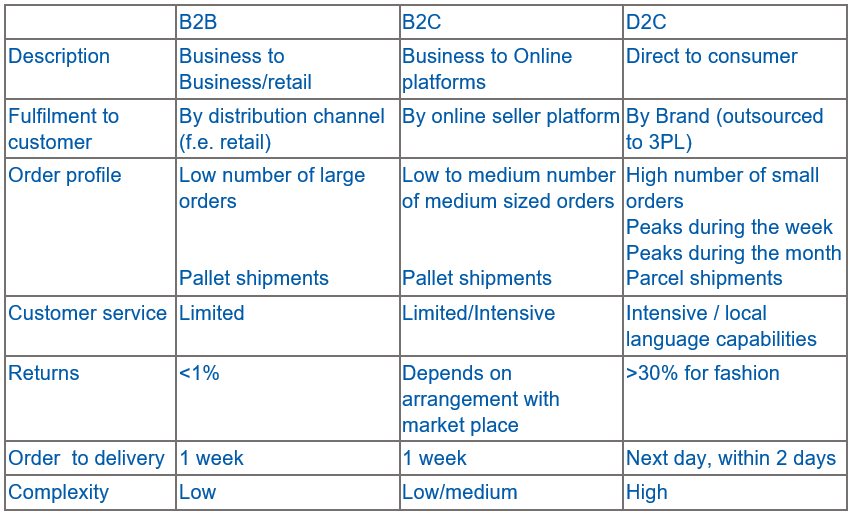Online shopping is booming for digital native and brick&mortar companies alike. Selling online direct-to-consumers (D2C) is more and more important. But selling D2C requires a more advanced supply chain and a more mature logistic service provider.

Covid accelerated online shopping to levels previously forecasted for 2030. The fast increase of online shopping is a big push for both digitally native companies like Dollar Shave Club (monthly subscription of new razors) and established brick &mortar companies alike to move from selling via e-commerce platforms like Amazon (B2C) to selling directly to customers (D2C). For most brands this does not mean fully cutting out B2C platforms. However, an extremely strong global brand like Nike did just that: at the beginning of 2020 Nike decided to moved completely away from selling on Amazon.
Selling directly to consumers (D2C) requires a more mature organization, a more mature customer service department (to interact with customers, and to support repair and returns), a more mature supply chain (going from pallet shipment to companies to parcels to end-customers).
Selling through e-commerce platforms like Amazon (B2C) is relatively easy. Why then move to D2C? First of all it improves customer intimacy, bringing customer data, visibility on customer preferences, and improved brand loyalty. In fact, 88% of consumers prefer to buy directly from the brand if given the option (source: E-commerce-platform, Sept 13, 2021). Secondly, if done correctly it improves the bottom line. E-tailer sales fees can take a big bite out the profit margin. Changing from Amazon to an outsourced fulfillment operation would increase the profit margin by 4% in the example given below.

Source: Kuhne & Nagel, adapted by BCI Global
Of course moving from selling through an online seller like Amazon (B2C) to selling through a company’s own Brand.com has – as mentioned - major implication to both the organization and the supply chain. Below table provides the main impacts on the supply chain.

Source: BCI Global
Special attention is needed for returns, which can increase dramatically with D2C. Returns from D2C for Fashion brands are 25-30%. And the return rate is increasing! With those levels of returns it is critical for the bottom line to have a solution in place. More background on this is discussed in a separate article.
Increasing the volume sold via D2C makes sense. It helps to increase customer intimacy and it can improve the bottom line. Obviously, D2C results in many small orders. This larger volume of small orders, combined with high demand volatility resulting from events like Black Friday, demand a different kind of supply chain compared to B2B or B2C. D2C requires a mature logistic service provider, capable of supporting these fluctuations in a cost effective manner, capable of addressing rising labor shortage, capable of supporting state-of-the-art IT infrastructure and where needed automation.